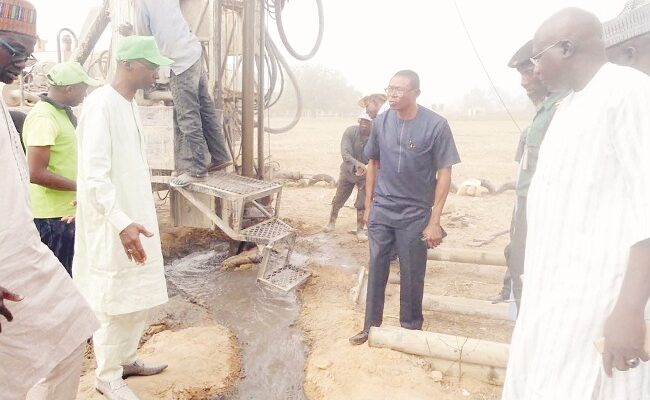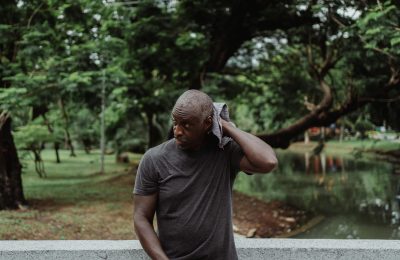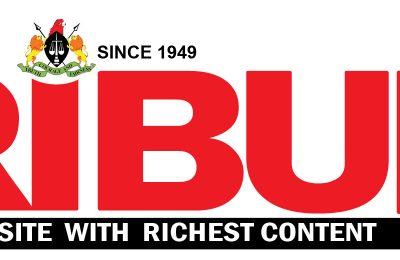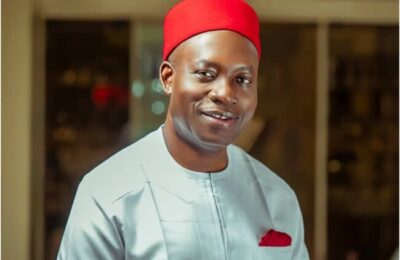
The discovery of crude oil in commercial quantities in Keana Local Government Area of Nasarawa State has revived the hope of the ailing national economy and proven that the North could further contribute to the betterment of the nation’s economy. But is the March date set for drilling by the Nigeria National Petroleum Company Limited (NNPCL) feasible? AHMED TAHIR reports the story behind the oil find and the undercurrents.
Osunso Jeremiah Waziri Elayo and his associates were building shields around heaps of yam tubers newly taken from his farm when a team of journalists arrived at his home in Keana. He advanced towards the visitors while his associates continued with their work under a locust bean tree.

As the reporters broached the subject of the visit – the discovery of oil and the recent news that NNPCL will commence oil drilling in March, 2023, his mood brightened as he regaled them with the history of the crude deposit and the many blessings fate had thrown the way of the ancient community.
The discovery
There are popular stories about the mineral deposits in Keana since Akyana Adi, alongside his elder brother, on one of his journeys some 12 centuries ago when they discovered salty water and decided to settle in the area. Adi’s discovery launched the small community tucked in the backwoods to international limelight as a leading salt hub.
Now, another discovery – the existence of crude oil – is about changing the fortunes of not just Keana, but its mother state, Nasarawa, the North and the country at large.
Like the story of the salt discovery, farmers had come up with tales of finding oily liquid while tilling the earth several years ago. Community leaders and the traditional institution spread these reports which later attracted the interest of geologists. There were skepticisms, especially with an already entrenched assumption that crude oil deposits could only be found in the southern part of the country even though surveys in the Middle Benue Trough on which Keana is located by scientists of northern extraction in 1996 indicated the presence of oil.
Similar studies in the Upper Benue Trough on which the Kolmani oil wells were drilled, it was gathered, indicated oil migration.
The Coordinating Director of Research at the Ibrahim Badamasi University (IBB), Lapai, Professor Nuhu Obaje, in an interview with Nigeria Tribune, explained that sentiments instead of scientific evidence became the yardsticks to agreeing with research results.
He said, “And these yardsticks were basically regional: North and South, with facts and figures needlessly thrown away as the baby with the bath water.”
He noted that Professor Jibril Aminu, as Minister of Petroleum Resources, directed multinational companies in the Niger Delta to pick some blocks in the inland frontier basins and that Edmund Daukoru, a former exploration manager at Shell, led the operation to prove that there were hydrocarbon deposits in the Benue Trough through Kolmani River 1, and that the wells by Chevron (Nasara-1) and by Elf (now Total) (Kuzari-1) were dry.
However, the directive by President Muhammadu Buhari to NNPCL to begin high-impact exploration work on the inland basins has changed the narrative, with the discovery of crude oil deposits in the Gongola Basin (Gombe/Bauchi) and later, the Middle Benue Trough.
Professor Obaje disclosed that other communities in Nasarawa such as Dedere, Obi, Agwatashi, Awe, Tunga, Lafia, Shabu, Doma, as well as Wase Shendam local government areas of Plateau State; Ibi and Wukari local government areas of Taraba; and Makurdi local government area of Benue State would tie on the Keana discovery.
He further said that the Bida and Sokoto basins had also shown a lot of promise with clear evidence of crude oil deposits.
He explained that part of the activities carried out in the Gongola Basin and the Middle Benue Trough included geological mapping, geochemical screening/coring and non-seismic geophysical studies, environmental impact assessment, 2D seismic survey, 3D seismic survey and play analyses.
What is left, according to him, is the commencement of actual drilling, which Mele Kolo Kyari, Group Chief Executive Officer of NNPCL, said would commence in March, 2023.
Mr. Kyari gave the March date recently when he hosted a high-powered delegation from Nasarawa State led by Governor Abdullahi Sule, which also had in attendance the paramount ruler of Keana, Alhaji Abdullahi Amegwa Agbo.
Kyari said, “We have carried out several exploratory activities in the form of gathering the right data and making the right decisions. We are very convinced at this point in time that very soon Nasarawa will join the league of states with hydrocarbon presence.
“This is not far away. As a matter of fact, we believe that we will start the first well in Nasarawa State by March, and this is to confirm; it’s typical science that once we are able to make a success of that well, then the potential of Nasarawa is beyond what I can explain at this point in time.”
Many indigenes, including Prince Mark Elayo (Turakin Keana) and the Chief Imam of the central mosques in the town, Malam Abdumalik Itali, said they were looking forward to March for the activities to begin when our correspondent visited the area last Monday.
Is the March date feasible?
The anticipation is no doubt high ahead of the D-day as residents wait with bated breath every day since the announcement of movement of heavy machinery to the town.
The chief imam said, “We have been waiting for the arrival of the team and machinery, especially since March is not far away.”
Meanwhile, our correspondent observed that there were no signs of activities heralding the exploration. The residents only pointed at an old camp which used to serve as a temporary abode for NNPCL staff and research teams a few years ago.
The facility comprises three kiosks made of zinc and a security post. The security guard, Abdullahi Ogoshi, said the owner was willing to lend out the facility to NNPCL.
However, there seems to be a disagreement among stakeholders on whether NNPCL can moblise resources before March. Before the NNPCL announcement, Governor Sule, on two different occasions, put the drilling and production period at 2027. However, the announcement by NNPCL which has moved the drilling and production date backwards is being viewed as political, with the opposition accusing the All Progressives Congress (APC) of using the situation to weave its nest for the coming general poll.
Engineer Ibrahim Danladi, an oil expert, contended that by now access roads, exploration platforms and massive sensitisation of residents ought to have been on if the Federal Government was serious about drilling in March.
He said, “Hopefully, if it works, the president would have delivered two inland basins that are crude-oil bearing and therefore scored a huge political point.”
Also, Mr Mike Omeri, a stalwart of the main opposition Peoples Democratic Party (PDP) in Keana, noted that, “I think the March date is too sudden. The governor earlier said 2027 was the most probable date for such activity to take place. I hope they are not playing politics with it. Whatever the case, let us make sure that the citizens of that area are taken into consideration and factored into the plans; the environment assessment should also be factored into the plans and all the necessary reports, including the environmental impact assessment, are brought in.
“Farmers who own the lands can be reached and communicated with; the community should be organised and sensitised to know how to expect and relate with this fortune that is about to come their way.”
He further said, “I have written books on oil, and I’m a consultant in the Gulf of Guinea. I also consulted for a few companies in São Tomé and Príncipe. I know it’s a long process, and even the process of securing a ridge takes time. I also know that after seismic studies, data are obtained once proven reserves are prospectively noted. The data are placed in a data prying room for us to see and assess the kind of risk they are to take. That is also a source of revenue to the government.
“I wonder if that has been done, and I want to believe that we are not in the stage of having investors. They are trying to prove that the reserves down there in the earth are oil-bearing and the possibility of long investment exists and investors who have the resources to explore the natural resources come there with full confidence and convinced to do business; not only with the community and government, but also for the benefit of all.”







